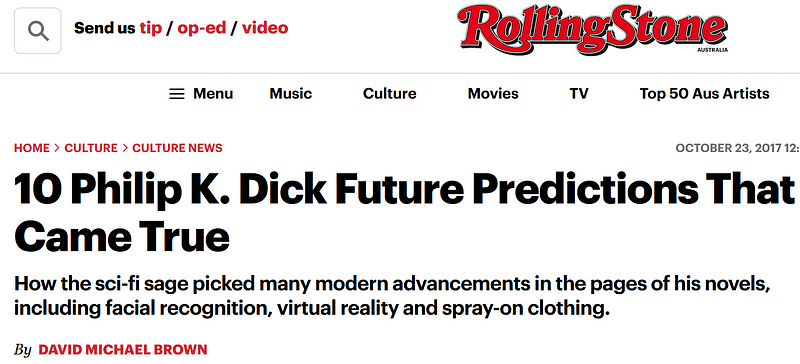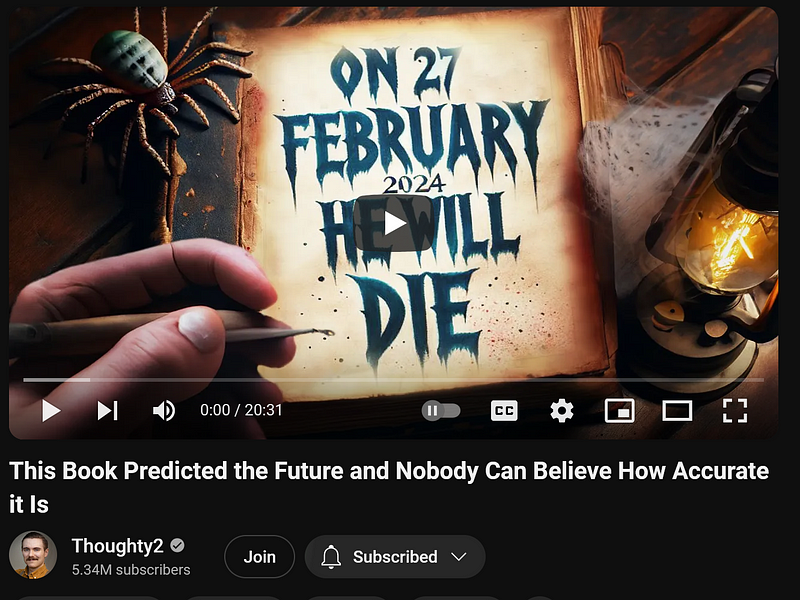Exploring the Viability of Remote Viewing: An Academic Perspective
Written on
Remote Viewing, a protocol developed by a US government-sponsored research team, was originally designed to investigate the potential for psychics to gather intelligence on the Soviets. The extensive program, lasting over two decades and costing tens of millions, merits further academic exploration. However, societal taboos have largely kept it from mainstream scrutiny. The reasons for this resistance may be more complex than they appear; like the suppression of UFO information, recognizing Remote Viewing as a legitimate phenomenon could undermine many societal structures reliant on secrecy. If one could perceive events across time and space, what truths would they seek?
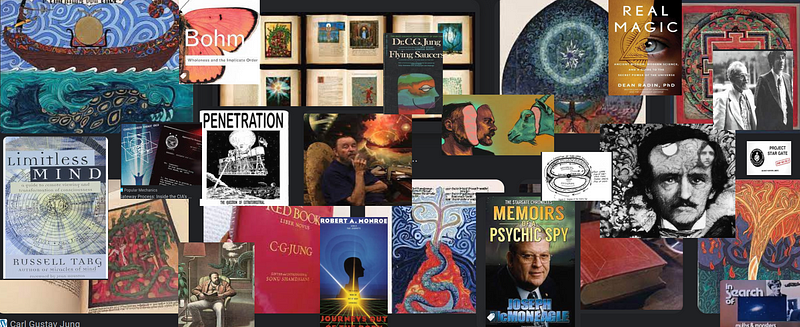
This essay will not revisit the extensive history of Remote Viewing. Instead, I suggest reading works by Ingo Swann, Russel Targ, Joseph McMoneagle, and Dean Radin. Even though Robert Monroe, Jacques Vallée, Michael Newton, and Carl Jung did not participate in the Stargate program, their contributions provide valuable insights that could elevate the perception of psychical research. Encouraging students to enhance their statistical analysis skills while conducting innovative studies is vital, regardless of the ultimate validity of the phenomena. The fascination with the paranormal cannot be dismissed.
The rationale is straightforward: if Remote Viewing lacks substance, then analyzing data and improving experimental designs can only be beneficial. Conversely, if there is truth to it, science's claim of "no evidence yet" necessitates allowing individuals to pursue investigations into these phenomena. One cannot dismiss the absence of evidence while simultaneously preventing exploration aimed at substantiating or refuting such claims. This exploration should prioritize developing improved testing methodologies and technologies that foster a deeper comprehension of the Phenomenon, which appears intrinsically linked to consciousness.
If the Phenomenon possesses consciousness and resists direct inquiry, an indirect approach may be required. It seems clear that the Phenomenon desires recognition, as it is too prevalent in human experience to be entirely disregarded. Just as scientists have discovered that light cannot simultaneously exist as a wave and a particle, examining aspects of consciousness that exhibit anomalous and contradictory traits may also prove challenging.
A Comprehensive Review of Existing Literature
In a previous essay, I proposed that if Remote Viewing is indeed genuine, we should uncover instances of unintentional, spontaneous information acquisition through mysterious means. Here, "accidental" refers to data obtained while engaging in unrelated activities, resulting in increased synchronicities.
The following assumptions guide this examination: Remote Viewing and ESP are real and quantifiable; all humans have access to these innate abilities; some individuals are more adept at accessing these abilities, similar to how certain people excel musically. This idea, discussed by Russell Targ, is supported by the demonstrated proficiency of Ingo Swann and Joseph McMoneagle compared to others. While most of us can hum a tune, not everyone can perform at a concert level. If everyone possesses some degree of this ability, evidence may emerge showing that artists and writers experience higher synchronicity rates than those not involved in creative endeavors.
For consistency, the definition of synchronicity will align with Carl Jung's terminology. Should consciousness play a role in the Phenomenon, Jung's ideas about the collective unconscious and synchronicity may need to be reassessed as more than mere abstractions, highlighting a genuine yet elusive conscious Phenomenon. Its reality is evident in outcomes, expectations, and interactions with all conscious agents.
Persian poet Rumi poignantly stated, "What you seek is seeking you."
In my prior essay, I identified various instances that suggest the possibility of Remote Viewing future events. I will reintroduce these examples and include new ones. For those pursuing this theme academically, I intentionally exclude individuals who may overtly claim psychic abilities. Edgar Cayce, by this definition, cannot be considered relevant evidence for the Phenomenon. Based on the aforementioned assumptions, we would expect genuine psychics and those who believe themselves to be so to demonstrate higher success rates compared to the general public.
Interestingly, those who perceive themselves as psychic often exhibit elevated failure rates, presenting a statistical anomaly; one would expect even the least accurate predictors to succeed at least half the time. This inconsistency hints at an interactive, if not temperamental, nature of the Phenomenon.
Individuals consistently failing in their predictions may either be genuinely psychic, self-sabotaging, or both—possibly engaging in psychic self-sabotage.
Morgan Robertson’s Futility, Or The Wreck of the Titan, written in 1898, bears a striking resemblance to the sinking of the Titanic in 1912, almost as if Robertson were a reincarnation of James Cameron. In a lighter vein, the artist behind the cover art for the Coup album claimed inspiration from a dream. The album was withdrawn following the events of 9/11, for obvious reasons.

Philip K. Dick, an author diagnosed with schizophrenia, appears to have had notable predictive success. However, we should perhaps exclude sci-fi writers, as they clearly engage in future speculation based on recognizable trends. Notably, Dick anticipated facial recognition technology long before it became commonplace.
The depiction of the "Face on Mars" in comic books during the 1950s is striking. This could either point to accidental psychic processes revealing Martian evidence or suggest a soft disclosure by a covert space force preparing humanity for the reality of extraterrestrial life, possibly indicating that NASA designed the infamous Face on Mars to discredit advocates for Martian life. Were they attempting to dismiss McMoneagle’s remote viewing of Mars before it was even solicited?

The lack of evidence does not stem from its absence but rather from the insufficient refinement of search parameters to enhance the quality of evidential analysis. This may be attributed not to intentional neglect but rather to academic inertia in categorizing the peculiarities arising from human artistic engagement. Such discoveries could imply that recognizing our potential exceeds mere sums of our parts evokes a primal fear, suggesting we bear more responsibility for our destiny than we are led to believe. If this is indeed real, failing to actively shape a desired future means others will manipulate it for their ends.
A familiar adage states that given enough time, monkeys randomly typing on typewriters would eventually reproduce Shakespeare’s works. If humanity is superior to monkeys, then in a global population of 8 billion, where creativity is widely practiced, the absence of inexplicable synchronicity would be significant.
Eureka! So Declares Edgar Allan Poe...
As each generation nears a paradigm shift, it is plausible that numerous individuals simultaneously experience insightful revelations. Galileo was not alone in his discoveries; Giordano Bruno faced persecution for espousing concepts aligned with Galileo's visual evidence.
Plagiarism is a tangible concern. Moviegoers will note that when one studio releases an asteroid film, others follow suit. While Ghost was a cinematic success, its counterpart, Ghostdad, was less well-received. Such examples illustrate that with 8 billion people, occurrences resembling plagiarism could point to parallel development.
The phenomenon of simultaneous idea and technology development is common enough to suggest the Greeks were correct in asserting that every thought is merely a reimagined ideal, as all thoughts exist in a non-local space accessible to all minds. This may also clarify why we refer to "research" rather than "search for the first time." Thoughts are tangible entities. Thus, we either accept the existence of a collective unconscious, a genuine non-local environment accessible to all, or contend with the serendipitous convergence of ideas among innovators and artists, which could call for a more lenient perspective on copyrights and patents since all human creations originate from a shared source: humanity itself. This too could serve as evidence for Remote Viewing.
Claims that "there is nothing new under the sun" do not imply a lack of invention or fiction but rather suggest that minds perceive what is already present somewhere, somewhen.
It could be argued, however, that a drunken poet might not be divining the universe's essence through poetic expression, whereas Persian poets or Hindu and Buddhist monks writing in Sanskrit might indeed provide profound insights. It is reasonable to seek synchronicities in human literature.
Perhaps Eureka, from 1848, is not the evidence we seek for the Force or the Phenomenon. It is intriguing that Poe foreshadowed the Big Bang and galaxies long before their existence was confirmed. But how might he have anticipated black holes?
In 1916, Albert Einstein, while daydreaming on a rowboat, conceived of "Relativity," from which black holes logically follow. Many significant advancements emerged from dream-like states, including the sewing machine, DNA structure, the periodic table, Google, and Mary Shelley's Frankenstein, though some attribute her inspiration to Johann Konrad Dippel and his alchemical pursuits.
To clarify, I am not disparaging Poe by labeling him a drunkard. His life was marked by childhood trauma and abandonment. Should this essay prompt a deeper investigation into literature for synchronicity, researchers may uncover correlations between trauma and enhanced predictive abilities. Perhaps trauma compels individuals to seek inner truths lost to them by life, or it opens pathways, as seen in shamanic cultures that incorporate ritualized trauma as initiation. Many may engage in this process, but few achieve the status of shaman. Alternatively, the ancient Confucian notion that introspection leads to fulfillment while external focus results in deprivation may hold weight.
Carl Jung echoes this sentiment: "Who looks outside, dreams; who looks inside, awakes."
It is possible that The Murder in the Rue Morgue does not predict advancements in cryptography or the unintentional birth of a new literary genre, nor does it foretell Sherlock Holmes. Rather, it is likely an instance of Poe's work being plagiarized. Ratiocination, as practiced by C. Auguste Dupin (who inspired Holmes), does not equate to remote viewing; "the extent of information obtained lies not so much in the validity of the inference as in the quality of the observation." Inference is an integral aspect of scientific inquiry, leading to hypotheses and null hypotheses. As data quality and quantity improve, so too does the accuracy of inference, enhancing scientific direction.
In other words, as Sir Arthur Conan Doyle asserted, once the impossible is eliminated, whatever remains, however improbable, must be the truth.
This analytical process is not how fiction is conceived, nor is it how Remote Viewing operates. In fact, remote viewers often strive to avoid analytical thinking, as it can lead to attempts at making sense of what is being perceived. If the lack of understanding leads to the creation of something new, or if inspiration arises from fleeting insights that enable authors to produce works, one may find artifacts resembling psychic acquisition amidst a sea of inconsequential material.
Human tendency to create excess "fluff" should not overshadow genuine insights. One must not discard valuable findings due to the presence of irrelevant information.
It should be noted that this essay was inspired by a Thoughty2 episode titled This Book Predicted the Future and Nobody Can Believe How Accurate it Is. Thoughty2 describes the next artifact as "the greatest coincidence in history." Is this hyperbole, or are academics truly perplexed? Is Remote Viewing still so marginal that they cannot discern the valuable insights hidden in the noise? As a proponent of Carl Jung who elevates synchronicity beyond mere chance, I assert that there is something greater at play than coincidence.
The narrative of The Narrative of Arthur Gordon Pym, published in 1838, tells the story of a shipwrecked crew who resort to cannibalism, ultimately consuming the youngest member, Richard Parker. Fifty years later, the yacht Mignonette sank in the South Atlantic, and one of the survivors, also named Richard Parker, was tragically eaten by his companions. This incident raises questions: is this evidence of Remote Viewing, or did Richard Parker unconsciously manifest his fate due to his affinity for Poe’s work? Such unconscious manifestations could suggest a self-fulfilling prophecy, also known as the expectancy effect. If science were to investigate this effect further within the framework of Jungian shadow work, it might find that individuals named Richard Parker should avoid sailing, especially if they bear a fondness for Poe and board a vessel named Mignonette—a sauce traditionally served with oysters.
It is important to recognize that one need not grasp foreshadowing to anticipate disaster from afar (Don’t go! How to Serve Man. It’s a cookbook!).
There are legitimate reasons why cultures develop superstitions; it is not simply a matter of human folly.
In Conclusion
This essay may be colored by my enthusiasm for UFOs and the paranormal; such biases are natural. Individuals often seek evidence that aligns with their beliefs. Nevertheless, the prevailing paradigm may be engaging in similar biases by favoring data that reinforces their worldview, as evidenced by the dismissal of genuine data as mere coincidence or ignoring it entirely.
Scientists who walk out of a lecture given by Dean Radin are failing to adhere to scientific principles. If one disagrees with the evidence presented, the appropriate response is to conduct a double-blind study to challenge it with reliable data.
Synchronicity serves as the bridge facilitating a shift in our current paradigm to embrace extraordinary evidence, of which there is ample material to explore. Is the quantity sufficient and statistically significant to transform the global paradigm? If only fringe scientists are conducting research while the majority remain detached from these principles, society risks missing out on fundamental changes that could lead to improvements.
As a member of MUFON and a field investigator of UFO reports, I might present myself as a UFO/paranormal researcher; however, given academia's disdain for volunteer researchers, I prefer to identify as merely an enthusiast. I hold a master’s degree in Community Counseling, which necessitates a foundational understanding of statistical analysis, yet I am primarily a practitioner in mental health, not a researcher. Competence in research remains essential to maintain professional standards in my field.
This essay represents an initial thesis, a work in progress that I intend to expand as I uncover further extraordinary evidence. I share it now, in its developmental phase, to invite individuals with greater expertise to either elaborate on or challenge its assertions through empirical research. Anyone interested in advancing this discussion is welcome to quote me in part or in full, or to undertake a complete rewrite.
A modest share of any Nobel Peace Prize funds would be greatly appreciated.
Addendum, Feb 18th, 2024
For my personal records, anyone interested might find a Why File episode offering additional evidence that aligns with this inquiry. Notably, the album cover for Survivor by Lynyrd Skynyrd, which depicted flames surrounding survivors, was released shortly before a tragic plane crash that claimed the lives of several band members. I recall reading about other predictive dreams in multiple books by Anthony Peake.
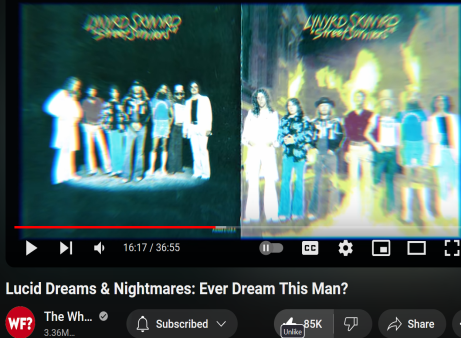
Anthony Peake books:

Addendum added September 7th, 2024
While researching the "Face on Mars," I discovered a similar concept proposed by a Japanese artist who envisioned a memorial for humanity in the event of nuclear war. He crafted this idea in sand, and only one photograph of his vision remains, captured alongside the NASA image of the Face on Mars.
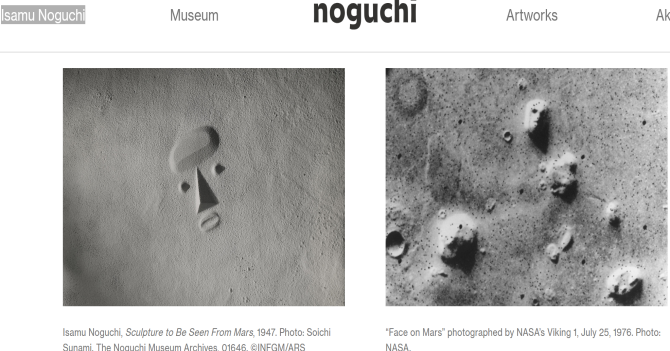
An excerpt from the Noguchi memorial page:
Noguchi’s memorial to mankind was intended for “some desert, some unwanted area.” It was, as the artist put it, “a sculpture just to be seen from the air so that, when you come to a landing, you will see the sculpture there.” That Noguchi was concurrently working on the Jefferson National Expansion Memorial suggests he was balancing both a belief in America’s future technological prospects and an acknowledgment of the bleak potential for mankind to destroy the planet and itself. Sculpture to Be Seen From Mars is today only memorialized in a single photograph of a model Noguchi had formed out of sand.


Recommended:

